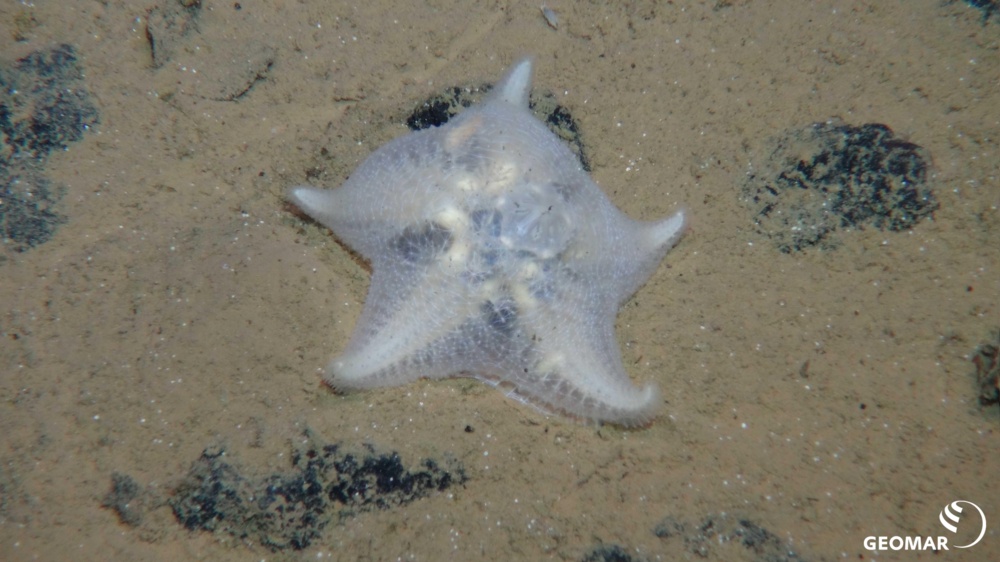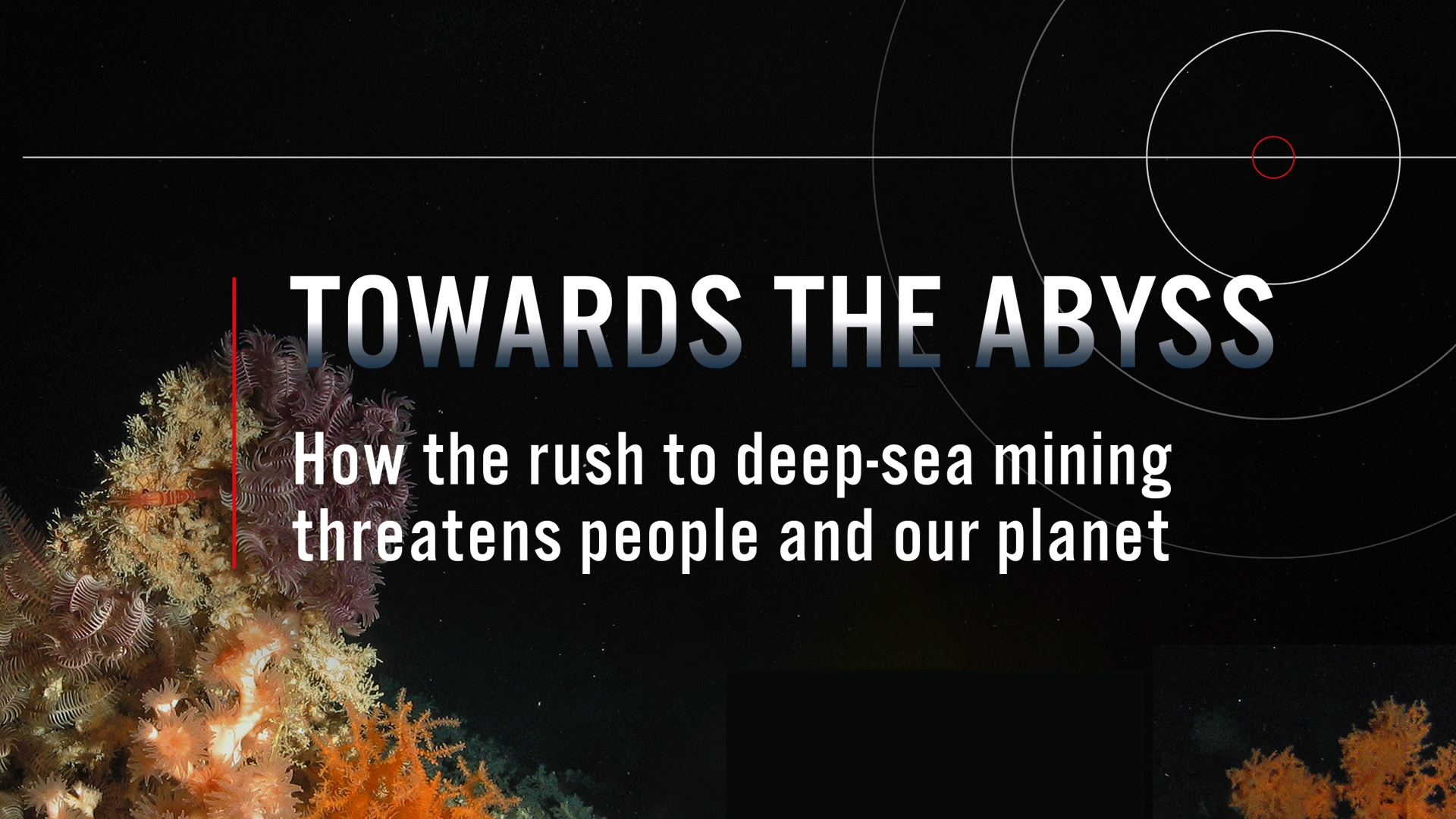
The false promise: deep-sea mining and the energy transition
Given global biodiversity loss and the devastating effects of the climate crisis, it’s clear we must move away from fossil fuels. We must upgrade to clean energy to maintain a habitable planet for humanity. One key question is how to meet the increasing demand for mineral resources that this requires.
Deep-sea mining companies, and a few countries, appear to have a solution: large quantities of critical minerals are found in the deep sea. It is claimed they are essential to meet the resource demands of the Paris climate targets. This conclusion is wrong, highly dangerous and could lead to deep-sea ecosystems being damaged forever. Fortunately, there are safe alternatives.
What is at stake
The deep sea is Earth’s largest habitat, virtually unexplored by humans. It is home to the oldest life forms ever observed - some up to 11,000 years old - and harbours incredibly rich biodiversity. We know that these ecosystems are central to oceanic food webs and global climate regulation. The introduction of mining into this precious ecosystem, characterised by clear water, silence, darkness, stability and longevity, would inevitably have serious consequences.
The scale is enormous: if only 5% of current exploration licences were used for mining, the total area would be larger than all existing terrestrial mining. Sediment clouds, the release of toxic heavy metals and the negative impact on the carbon cycle would also pollute areas far beyond the mining sites. Fish populations could be negatively affected, and metals could accumulate in organisms, with catastrophic consequences for food supply.
Despite this, proponents of deep-sea mining, especially private companies, are pushing for its rapid introduction. Their argument is that deep-sea minerals are essential to meet the resource needs of the energy transition is a misleading one, as it assumes we will continue to waste existing resources on an unprecedented scale.
These proponents also ignore existing alternatives and technological developments. Deep sea mining is not necessary, as recognised by the European Academies Science Advisory Council, which has rejected the would-be miners’ narrative. Circular economy strategies, new battery technologies, improved recycling rates and smarter use of resources can reduce mineral demand by up to 58%.
The circular economy
Batteries are a key part of projected mineral demands, but they are increasingly moving away from mineral-intensive chemicals. For example, lithium iron phosphate car batteries use neither nickel nor cobalt and have been widely used since at least 2021, growing from a 17% market share that year to 31% just a year later. BYD, China's largest electric car manufacturer, now relies exclusively on them. Expected breakthroughs in new battery technology could further reduce mineral demand.
Our resource use also matters. Every year, more than 62 million tonnes – and rising - of electronic waste are generated worldwide. That's enough to span the entire equator with a chain of rubbish lorries. Under 20% of e-waste is recycled, despite the methods existing to improve this. In 2022 alone, enough copper was used to make disposable e-cigarettes to produce 1.6 million home charging stations for e-cars.
Recent EU legislation has developed plans to boost the circular economy, and in international biodiversity treaties, states have committed to halting extinctions and better protecting the natural environment. Deep-sea mining would be diametrically opposed to all these endeavours.
Leading global companies are also ruling out the use of deep-sea minerals: BMW, VW, Samsung and other global brands such as Google, Volvo and Scania are calling for a global moratorium on deep-sea mining, citing the inevitability of circular economy solutions.
Meanwhile ever-more countries – now 27 - also want to stop deep-sea mining. The EU Parliament and the EU Commission, United Nations human rights commissioners, indigenous peoples, scientists, financial institutions, the fishing sector, environmental organisations and millions of petition signatories are calling for a halt to deep-sea mining.
Despite these developments, in January 2024 Norway became the first industrialised country to open its waters to deep-sea mining. A Canadian mining company has announced that it will submit the first application to extract deep-sea minerals in international waters in July 2024, despite the framework for regulating deep-sea mining not yet being agreed, using the energy transition as justification.
Critical mass for a moratorium
Since the idea of deep-sea mining was born in the 1960s, our wasteful use of resources and unbridled exploitation of the natural world has led to the triple crisis of climate breakdown, species extinction and environmental pollution. The United Nations Environment Programme has warned of "catastrophic" consequences if we do not immediately and fundamentally change our approach.
Deep-sea mining would continue old patterns of behaviour and exacerbate these crises. We must not allow the last almost untouched ecosystems on Earth to be destroyed for the financial desires of a few. The international community must urgently agree a moratorium on deep-sea mining.
Central to this is the International Seabed Authority (ISA), the regulatory body for deep seabed resources in international waters. This month, the ISA hosts key meetings, which may put a serious question mark around the introduction of deep-sea mining for the first time, and serve as the prelude to a precautionary pause - if a critical mass of the 168 member states can bring themselves to do so.
Public criticism and more companies standing up against deep-sea mining can make a decisive contribution to protecting our ocean in the coming months. To do this, they must speak out clearly against deep-sea mining and increase the pressure on governments. The value of a moratorium cannot be overestimated: we now have a unique opportunity to prevent an environmental catastrophe before it even begins.
By Steve Trent, EJF CEO and Founder, and Martin Webeler, EJF Ocean Campaigner and Researcher.
This is an abridged and translated version of an article that was first published in German on www.oekom.de.
The image used in this article is a starfish between manganese nodules, taken by ROV KIEL 6000 & GEOMAR and reproduced here under a Creative Commons License.
SIGN UP FOR OUR EMAILS AND STAY UP TO DATE WITH EJF

